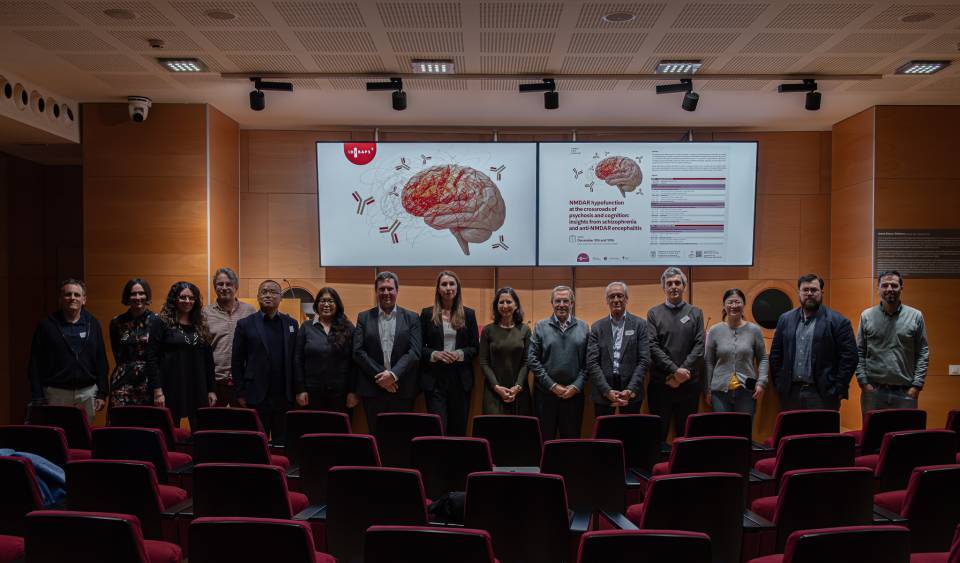Cirrhosis, one of the leading causes of liver mortality worldwide, remains a major medical challenge. Despite advances in our knowledge of the disease, therapeutic options remain limited, especially in the advanced stages. Now, two studies shed new light on the molecular mechanisms that explain cirrhosis progression and open the door to innovative treatments based on the modulation of microRNAs (miRNAs). The studies are led by the IDIBAPS Liver Vascular Biology group, directed by Jordi Gracia-Sancho, who is also group leader and scientific director of the Area of Liver and Digestive Diseases at CIBER CIBEREHD. The funding has been provided by the Carlos III Health Institute and the CIBER.
The role of extracellular vesicles and the microRNA miR-153-3p
The first of the studies, published in Hepatology, is based on an innovative hypothesis: liver cells, within the context of chronic disease, send messages to each other through extracellular vesicles (EVs) loaded with miRNAs, small molecules with a high regulatory capacity. Gracia-Sancho’s team analysed how cirrhotic hepatocyte-derived EVs (hepEVs) can contribute to liver sinusoidal endothelial cell (LSECs) dysfunction, a key process in the progression of cirrhosis.
Using a combination of human and animal models, the researchers isolated hepEVs from healthy and cirrhotic livers and administered them to healthy rats in order to study their distribution and effects on LSECs. The profile of miRNAs in human cirrhotic hepEVs, validated in rat models, allowed the identification of 37 dysfunctional miRNAs, with special emphasis on miR-153-3p. This miRNA induces gene dysregulation in LSECs associated with inflammation and pyroptosis, a form of inflammatory cell death.
The results show that cirrhotic hepEVs are mainly uptaken by LSECs and alter the expression of genes related to fibrosis, inflammation and cell death. In both human tissues and cirrhotic animal models, an increase in active Caspase-1 and Gasdermine-D was observed, indicating endothelial pyroptosis. Treatment with a Caspase-1 inhibitor (VX-765) reduced the hepatic pyroptosis, improving the endothelial phenotype and the portal hypertension.
In the words of Jordi Gracia-Sancho, “our results show that extracellular vesicles derived from cirrhotic hepatocytes, enriched with miR-153-3p, have a harmful effect on the hepatic endothelium. Caspase-1 inhibition is presented as a promising therapeutic strategy to combat endothelial dysfunction in chronic liver disease.”
miR-27b-3p: a new therapeutic target
The second study, published in Hepatology Communications, looks deeper into the role of endogenous miRNAs in the regulation of the hepatic endothelial phenotype. In this case, the objective was to analyse how the loss of certain miRNAs can promote the dedifferentiation of LSECs and contribute to liver microvascular dysfunction in cirrhosis.
The team analysed the global expression of miRNAs in primary LSECs of healthy and cirrhotic (due to alcohol consumption) patients, as well as in rats with experimental cirrhosis. Several dysregulated miRNAs were identified, with the prominence of miR-27b-3p as a key element. Its loss is associated with the dedifferentiation of LSECs, while the reintroduction of miR-27b-3p via nanocomplexes restored physiological levels and modulated more than 1000 genes, inhibiting the endothelial to mesenchymal transition.
These results suggest that nano-miR-27b-3p could be a new therapeutic strategy to treat endothelial dysfunction in chronic liver disease, opening the door to precision medicine in this field.
Implications for the future
The results of these studies represent a step forward in the understanding of the molecular mechanisms of cirrhosis, opening the door to new therapeutic strategies based on miRNA modulation. The possibility of intervening in endothelial dysfunction through the inhibition of Caspase-1, or the reintroduction of specific miRNAs, such as miR-27b-3p, could transform the treatment of chronic liver disease in the coming years.
Reference of the studies:
- Abad-Jordà, Laia1,2,3; Andrés-Rozas, María1,3,4; Martínez-Alcocer, Ana1,2,3; Aspas, Jessica5; Fundora, Yiliam5; Fernández-Veledo, Sonia6,7,8; Peralta, Carmen9; Guixé-Muntet, Sergi1,2; Fernández-Iglesias, Anabel1,2; Gracia-Sancho, Jordi1,2,10. Hepatocyte-derived extracellular vesicles promote endothelial dedifferentiation in chronic liver disease through the miR-153-3p – pyroptosis axis. Hepatology ():10.1097/HEP.0000000000001567, October 10, 2025. | DOI: 10.1097/HEP.0000000000001567 https://journals.lww.com/hep/abstract/9900/hepatocyte_derived_extracellular_vesicles_promote.1434.aspx
- Abad-Jordà, Laia1,2,3; Martínez-Alcocer, Ana1,2,3; Guixé-Muntet, Sergi1,2; Hunt, Nicholas J.4,5; Westwood, Lara J.4,5; Lozano, Juan José2; Gallego-Durán, Rocío2,6; Cogger, Victoria C.4,5; Fernández-Iglesias, Anabel1,2; Gracia-Sancho, Jordi1,2,7. miR-27b-3p modulates liver sinusoidal endothelium dedifferentiation in chronic liver disease. Hepatology Communications 9(5):e0700, May 2025. | DOI: 10.1097/HC9.0000000000000700 https://journals.lww.com/hepcomm/fulltext/2025/05010/mir_27b_3p_modulates_liver_sinusoidal_endothelium.13.aspx




